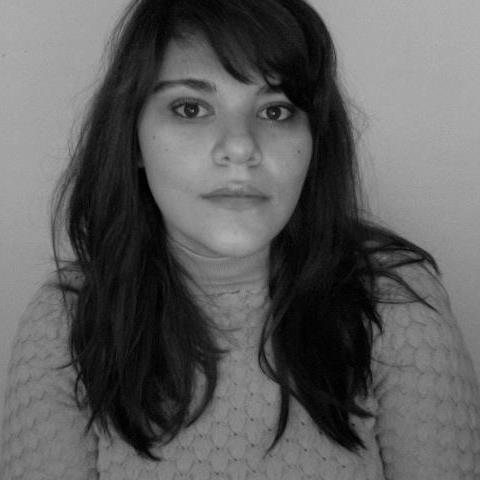November 2022
Brit Barton
Smother to death, bring back to life
The 204 days it took to build the monumental reinforced-concrete block that covered up the nuclear site of the Chernobyl Nuclear Power Plant were mired in a matter of semantics. Officials wondered what the site should be called, with the ultimate hopes of straying away from the death image and of quelling the global outrage with a strong, symbolic structure. In Russian, it became formally known as Obyekt Ukrytiye (“object shelter”), but it was commonly referred to as the “Chernobyl Sarcophagusespecially in the West and in international interviews for years to come” and it did little to aid in the Soviet reputation after the catastrophe – especially when it needed its own covering 10 years later. As the structure began to erode much sooner than the original 20-to-30-year shelf life that had been predicted, the Greek origins of sarco- as flesh and -phagus as eating became more relevant and recognisable, particularly as the USSR had also crumbled onto itself.
The obvious slippage of language and translation here gives rise to cultural differences of care or concern versus another that means to confine or contain, especially in light of traumas like death or disaster. Inga Danysz’s aluminium Sarcophagus 03(2022) banks on a similar multiplicity of meaning: It is at once a sculpture that mimics the body in a free-standing ancient pose; a space-age sleeping chamber; a play on a medieval iron maiden; or, simply, a coffin. In each case, it holds the capacity to both confront and comfort a viewer in the most sadistic or satisfying of ways. Simultaneously, it caters to the human impulse to ask what is it that exists inside a sculpture. Sarcophagus 03 is one of several fabrications of the stoic, faceless form, which, in other works, is rendered in more pensive poses that distance the sarcophagus as a stately sculpture and personify it in states of repose or doubt. The work Sarcophagus 02(2022) serves as a reminder that all guarded façades will fade – whether out of physical exhaustion, in memory, or in death.
Art and immortality are two subjects tied together by virtue of being housed in their own perceived sacred spaces: the museum and the cemetery. For Danysz’s Sarcophagus 03, the inherent throwback to King Tutankhamun is obvious, as a point of both continued cultural fascination and a pinnacle of modernist discoveries that straddle both the living and the dead, the colonial and the objectified. After the sudden death of the archaeological expedition’s patron Lord Carnarvon, the sensationalised process of opening an ancient tomb and capitalising on what’s inside of it fuelled the mythos of the so-called “Pharaoh’s curse”.
When viewing Danysz’s sculpture at Liste last year, I began to imagine what might be inside the vessel that alludes to the preservation or destruction of a body. But as Lord Carnarvon may attest in retrospect, perhaps it’s better to leave things as they are and not discover what’s inside. This very question divided the Surrealist’s in 1934, as André Breton and sceptical polymath Roger Caillois debated the origin of a Mexican jumping bean. Twitching in the air and seeming to dance with a life of its own, the two men argued over an explanation of the humble-looking seed pod. To Breton, a true Surrealist doesn’t ask but accepts and embraces the mysterious ways of life. To the empirical Caillois, what is closed must be open for dissection; with answers only come more questions.
I find that exteriors may be just as enlightening. Sarcophagus 03’s lightweight frame is bolted together with smoothly bent sheets of polished aluminium and stands slightly taller than the artist’s height, having been measured to perfectly encapsulate her. The philosophical juxtaposition of the Atomic Age – that which surrounded a focus on the preparation for a post-apocalyptic future due to a pending and inevitable nuclear disaster – is perhaps the strongest signifier within the sculpture: It seems to be a portable fallout bunker or a futuristic cryogenic chamber.
Moreover, this object-shelter has a visible seam and two hinges, and, like any container, it can open, close, and (I assume) lock. Its clearly defined shape, with space for a head, torso, legs, and feet, indicates that it is meant for a body without much room to grow, much less move. While you could place yourself inside given the dimensions, why would you want to? A much more cynical way to see it is through force, reversing the idea of it as a place for a peaceful afterlife, safety, or preservation, and perceived through the lens of the horror trope or fetishist idea of an iron maiden. Though this device has as much historical significance as the Pharoah’s curse, it also begs the question of current and medieval efforts to confine people’s – notably women’s – bodily autonomy and movements.
The irony is in the effortless-looking sculpture’s Twilight Zone–era of existence, pointing neither here nor there in time, yet firmly grounded in place by a sea of past references, unable to hide in plain sight. There exists a deep-seated sense of dread in experiencing the work that becomes an inevitable part of the process. Something has happened or is about to happen. But the distraction of a high-finish, illustrious art object creates a seductive, forgiving atmosphere, and the material efficacy tends only to add to the narrative of the piece. The allure of Sarcophagus 03 as a liminal shell of security, however, withholds the reality that it is not only a womb but also a curse of captivity.

Brit Barton is an artist and writer based in Zurich and Chicago.
